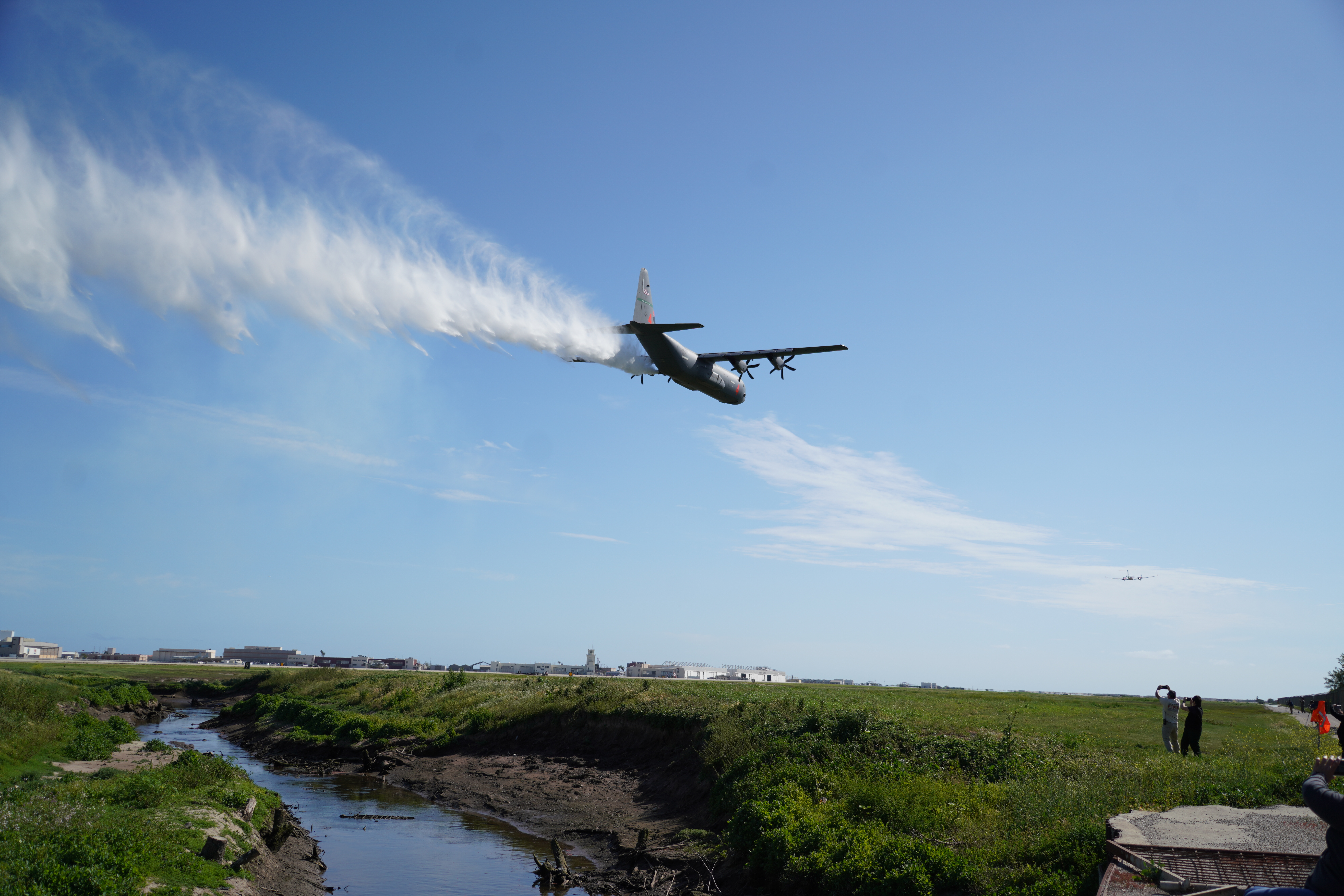146 Airlift Wing, California Air National Guard
Story by Master Sgt. Nicholas Carzis
The U.S. Forest Service held its annual certification and training event for the aerial firefighting program known as MAFFS (Modular Airborne Fire Fighting System) with two of the four assigned Department of Defense aircrews from the Air Force Reserve’s 302nd Airlift Wing, Colorado Springs, Colorado, and the California Air National Guard’s 146th Airlift Wing nicknamed the “Hollywood Guard.” Together with wildland fire fighting agencies such as CAL FIRE, and the Bureau of Land Management, the multi-agency MAFFS program kicked off their first iteration of training this week at the Channel Islands Air National Guard Station.
During the same year as its 100-year centennial celebration and one year after the 50-year anniversary of the MAFFS program, the 146th Airlift Wing is hosting MAFFS training for the second year in a row.
MAFFS, a unique partnership between the U.S. Forest Service and the Department of Defense, shares a combination of resources supporting aerial firefighting operations that include equipment, personnel and aircraft that provide a critical “surge” capability to the U.S. Forest Service to slow or stop the spread of wildland fires when all commercial airtankers within the national airtanker fleet are fully committed or not readily available.
The U.S. Forest Service provides this training event annually, which requires any aircrew supporting this mission to gain their certification before they can support any wildland fire operations as a part of their annual training requirements. Afterwards, MAFFS aircrew will continue to supplement their experience throughout the year once they start supporting MAFFS missions after certification training. Depending on the cadence of what often is a busy fire season, MAFFS personnel must ensure they are making the most out of every opportunity for training.

While the number of wildfires in the U.S. is measured as an average amount for last year, it did hold the record for the fewest acreage burned in the past 25 years. During this time, MAFFS air tankers were first used on August 3, 2023, and released on September 6, 2023. During that 35-day activation, MAFFS aircrew flew 69 missions providing 73 retardant drops which totaled 185,263 gallons.
While nobody can predict when the next major fire incident will come, the one constant force that is ready to meet the challenges of a busy fire season are the people supporting MAFFS.
Col. DeAnna Franks, the operations group commander for the 302nd Airlift Wing and this year’s Air Expeditionary Group Commander for all Department of Defense assets for the MAFFS mission, says that the annual training events are a pivotal moment within the pre-fire season to ensure readiness across the MAFFS enterprise.
“MAFFS is a robust partnership with many agencies and support functions that work intricately together to accomplish large-scale aerial firefighting missions successfully. This is why MAFFS training is so important because it affords us the opportunity to capitalize on our collaboration efforts with all the agencies participating. Completing our annual training each year is paramount as it allows our aircrews to get those critical training hours we need before we respond to a real fire,” said Franks.
Franks says that the intricate partnership’s success is built on a valued cooperation over the past 50 years.
“Modular, the first word of the MAFFS acronym, might perhaps be the best word to corroborate just how flexible and efficient our working partnerships have developed over the last 50 years. Last year in December, the MAFFS community collectively celebrated it’s 50-year semi-centennial anniversary with all our partners working within the U.S. Forest Service, CAL FIRE, the Bureau of Land Management, as well as many other valued firefighting assets across the county who support the MAFFS mission. It was a great opportunity to reflect on just how impactful this mission is and just how special all the people involved with the MAFFS program are,” said Franks.

Franks added, “For me, when I think about the success of this government program that has been around for as long as it has, it’s clear to me why the MAFFS mission has been so successful. The people of MAFFS are a testament to the program because of all the great work they do, and it’s an absolute honor to work alongside everyone who supports the mission.”
Kim Christensen, deputy assistant director operations for the U.S. Forest Service and one of the driving forces behind the MAFFS training at Channel Islands, has been a part of the MAFFS mission since 2012, says she still loves coming to work with the people involved with the MAFFS mission after all these years.
“The teamwork and partnerships are really what make the program such a success. In addition to the airlift wings, a number of other federal and state agencies and local departments are also involved. The members of the airlift wings that participate in the MAFFS program are consummate professionals. They take the annual training very seriously and are always prepared to assist us with wildfire suppression, whenever asked,” said Christensen.
Utilizing the same training schedule as the year prior, both training events will take place on two separate weeks to help mitigate the busy schedules for the 3 Air National Guard and Air Force Reserve components involved. Two additional Air National Guard units assigned to the MAFFS mission from the Nevada’s 152nd Airlift Wing, and the Wyoming Air National Guard’s 153rd Airlift Wing, will also travel to Channel Islands Air National Guard Station to complete their training and certification in early May.
For more information and stories regarding the MAFFS mission, please visit the MAFFS AEG page at https://www.dvidshub.net/feature/MAFFSAEG
